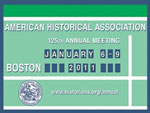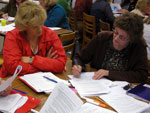(Note: By the completion of twelfth grade, Iowa students are expected to master the following standards.)
Subject: Behavioral Sciences
Behavioral sciences include, but are not limited to, the areas of sociology, anthropology and psychology. In addressing these disciplines the actions and reactions of humans are studied through observational and experimental methods.
Essential Concept and/or Skill:
Understand the historical development of the behavioral sciences and the changing nature of society.
-
Understand the fields of psychology and sociology developed in response to social and economic changes.
-
Understand the role of major social institutions of American society.
-
Understand the role of social institutions as well as individual and group behaviors, in bringing about social change.
-
Understand that mass media, migrations, and conquest have affected social change by exposing one culture to another.
-
Understand change and development in institutions further both continuity and change in societies.
Essential Concept and/or Skill:
Understand the influences on individual and group behavior and group decision making.
-
Understand the appropriate research procedures and skills of the behavioral scientist.
-
Understand the types of research methods used by behavioral scientists to study human behavior, social groups, social issues and problems.
Essential Concept and/or Skill:
Understand current social issues to determine how the individual is able to formulate opinions and responds to those issues.
-
Understand past and current cultural, religious, and social reform movements.
-
Understand that differences in the behavior of individuals arise from the interaction of heredity and experience.
-
Understand that conflict between people or groups may arise from competition over ideas, resources, power, and/or status.
-
Understand that personal values influence the types of conclusions people make.
-
Understand that even when the majority of people in a society agree on a social decision, the minority who disagree must be protected from oppression.
-
Understand ideas and modes of inquiry drawn from behavioral science and social theory in the examination of persistent issues and social problems.
Essential Concept and/or Skill:
Understand how social status, social groups, social change, and social institutions influence individual and group behaviors.
-
Understand the concept of stratification.
-
Understand gender, age, health, and socioeconomic status affect social inequality.
-
Understand changes in social and political institutions reflect and affect individuals' values and behaviors.
Essential Concept and/or Skill:
Understand the process of how humans develop, learn, adapt to their environment, and internalize their culture.
-
Understand that heredity, culture, and personal experience interact in shaping human behavior.
-
Understand the stages of physical, perceptual, and intellectual development that humans experience from infancy to old age.
-
Understand the concept of culture.
-
Understand that peoples' values and behavior are shaped by their culture.
-
Understand the processes of cultural transmission and cultural change.
Essential Concept and/or Skill:
Understand how personality and agents of socialization impact the individual.
-
Understand the factors that shape personality and identity
-
Understand the process of socialization leads individuals to become functioning members of society.
-
Understand groups and institutions sometimes promote social conformity.
Subject: Economics
Economics addresses the production, distribution, and consumption of goods and services. The concept of scarcity is understood to mean that available resources are insufficient to satisfy the wants and needs of everyone. Economics is therefore founded upon the alternative use of available resources and the study of choices.
Essential Concept and/or Skill:
Understand the function of common financial instruments.
-
Understand the cost of borrowing money over long periods of time.
-
Understand the concept of insurance.
-
Understand credit cards.
-
Understand the role of personal taxes in society.
-
Understand different financial investments, such as mutual funds, stocks and bonds.
-
Understand saving for retirement.
Essential Concept and/or Skill:
Understand the role of scarcity and economic trade-offs and how economic conditions impact people’s lives
-
Understand the concepts of marginal benefit and marginal cost in connection to economic actions.
-
Understand increases and decreases in productivity are influenced by positive and negative incentives.
-
Understand production possibilities curves.
-
Understand the impact of increases in wages or a change in government policy (new taxes, interest rate, subsidies) on consumers, producers, workers, savers and investors.
-
Understand the role of business plans.
-
Understand long-term unintended consequences of economic choices made by individuals, businesses, and governments.
-
Understand the unemployment rate.
Essential Concept and/or Skill:
Understand the functions of economic institutions.
-
Understand the basic functions of money.
-
Understand the composition of the money supply.
-
Understand that economic institutions have different goals, rules, and constraints.
-
Understand banks and other financial institutions affect the economy.
-
Understand government policies affect economic institutions.
-
Understand the role of non-profit organizations.
Essential Concept and/or Skill:
Understand how governments throughout the world influence economic behavior.
-
Understand the role of fiscal and monetary policies in governments.
-
Understand government regulation of industries.
-
Understand the economic trade-offs of government assistance programs.
-
Understand the impact of the federal budget on the economy at the individual, household, and business levels.
-
Understand changes in spending and taxation affect national deficits, surpluses, and debt.
-
Understand the role of the Federal Reserve.
Essential Concept and/or Skill:
Understand how universal economic concepts present themselves in various types of economies throughout the world.
-
Understand the law of supply and demand affects the price of products.
-
Understand major world economic systems.
-
Understand factors that influence Gross Domestic Product for specific countries.
-
Understand different policies and actions that combat inflation, deflation, and recession.
-
Understand economic self-interest influences economic decisions.
Essential Concept and/or Skill:
Understand the local, state, regional, national, and international factors that create patterns of interdependence in the global economy.
-
Understand the difference between domestic and global economic systems and how the two interact.
-
Understand absolute and comparative advantage.
-
Understand the costs and benefits of free trade among countries.
-
Understand trade barriers imposed by the United States from a historical perspective and the impact of those actions.
-
Understand the role of exchange rates between countries and their effect on purchasing power.
-
Understand government subsidies to industries and the effect on global trade.
Essential Concept and/or Skill:
Understand the impact of advancing technologies on the global economy.
-
Understand the role of technologies that interlock the global economy.
-
Understand the role of investment and government support in advancing technologies.
-
Understand the impact of green technologies in the global economy.
Subject: Geography
Geography is the study of the interaction between people and their environments. Geography therefore looks at the world through the concepts of location, place, human-environmental interaction, movement, and region.
Essential Concept and/or Skill:
Understand the use of geographic tools to locate and analyze information about people, places, and environments.
-
Understand the characteristics and uses of geographic technologies.
-
Understand geographic representations and tools used to analyze, explain and solve geographic problems.
-
Understand the use of mental maps of physical and human features of the world to answer complex geographic questions.
-
Understand perspective and point of view in interpreting data on maps.
-
Understand the value of using maps from different sources and points of view.
Essential Concept and/or Skill:
Understand how physical and human characteristics create and define regions.
-
Understand culture as an integrated whole that explains the function and interactions of language, literature, the arts, traditions, beliefs and values and behavior patterns.
-
Understand regional boundaries change.
-
Understand places and regions are important to individual human identity and as symbols for unifying or fragmenting society.
-
Understand external forces can conflict economically and politically with internal interests in a region.
Essential Concept and/or Skill:
Understand how human factors and the distribution of resources affect the development of society and the movement of populations.
-
Understand population issues.
-
Understand international migrations are shaped by push and pull factors.
-
Understand the impact of human migration on physical and human systems.
-
Understand the impact of policy decisions regarding the use of resources in different regions of the world.
-
Understand issues related to the reuse and recycling of resources.
-
Understand the physical and human factors that have led to famines and large-scale refugee movements.
-
Understand competition for and conflict over natural resources
Essential Concept and/or Skill:
Understand how physical and human processes shape the Earth’s surface and major ecosystems.
-
Understand relationships between soil, climate, plant and animal life affect the distributions of ecosystems.
-
Understand the importance of ecosystems in understanding the environment.
-
Understand physical processes affect different regions of the United States and the world.
-
Understand social, cultural and economic processes shape the features of places.
-
Understand the effects of human and physical changes in ecosystems both locally and globally.
Essential Concept and/or Skill:
Understand how human actions modify the environment and how the environment affects humans
-
Understand competition for control of the Earth's surface can have a positive or negative effect on the planet and its inhabitants.
-
Understand the global impact of human changes in the physical environment.
-
Understand programs and positions related to the use of resources on a local to global scale.
Essential Concept and/or Skill:
Understand how culture affects the interaction of human populations through time and space.
-
Understand technology and human mobility have changed various cultural landscapes.
-
Understand the processes of spatial change have affected history.
-
Understand the role culture plays in incidences of cooperation and conflict in the present day world.
-
Understand the causes of boundary conflicts and internal disputes between culture groups.
-
Understand diverse cultural responses to persistent human issues.
Essential Concept and/or Skill:
Understand how cultural factors influence the design of human communities.
-
Understand the impact of changing global patterns of trade and commerce on the local community and predict the future impact of these patterns.
-
Understand cultures influence the characteristics of regions.
-
Understand people create places that reflect culture, human needs, government policy, and current values and ideals as they design and build places.
Subject: History
History is the study and analysis of the past. Built upon a foundation of historical knowledge, history seeks to analyze the past in order to describe the relationship between historical facts, concepts, and generalizations. History draws upon cause and effect relationships within multiple social narratives to help explain complex human interactions. Understanding the past provides context for the present and implications for the future.
Essential Concept and/or Skill:
Understand historical patterns, periods of time, and the relationships among these elements.
-
Understand concepts such as chronology, causality, change, conflict, and complexity to explain, analyze, and show connections among patterns of historical change and continuity.
-
Understand significant historical periods and patterns of change within and across cultures, such as the development of ancient cultures and civilizations, the rise of nation states, and social, economic, and political revolutions.
-
Understand patterns of social and cultural continuity in various societies.
Essential Concept and/or Skill:
Understand how and why people create, maintain, or change systems of power, authority, and governance.
-
Understand the purpose of government and how its powers have been acquired, used, and justified.
-
Understand different political systems from historical periods.
-
Understand from a historical perspective the purpose and effects of treaties, alliances, and international organizations that characterize today's interconnected world.
Essential Concept and/or Skill:
Understand the role of culture and cultural diffusion on the development and maintenance of societies.
-
Understand the ways groups, societies, and cultures have addressed human needs and concerns in the past.
-
Understand societal patterns for preserving and transmitting culture while adapting to environmental or social change.
-
Understand the value of cultural diversity, as well as cohesion, within and across groups.
-
Understand the origins, central ideas, and global influence of world religions
-
Understand cultural factors that have promoted political conflict.
Essential Concept and/or Skill:
Understand the role of individuals and groups within a society as promoters of change or the status quo.
-
Understand the significance of important people, their work, and their ideas in the areas of political and intellectual leadership, inventions, discoveries, and the arts.
-
Understand the role the values of specific people in history played in influencing history.
-
Understand the significant religious, philosophical, and social movements and their impacts on society and social reform.
-
Understand the effect of "chance events" on history.
Essential Concept and/or Skill:
Understand the role of individuals and groups within a society as promoters of change or the status quo.
-
Understand how economic issues have influenced society in the past.
-
Understand connections between the cultural achievements of early civilizations and the development of political and economic institutions.
-
Understand that choices made by individuals, firms, or government officials often have unintended consequences that can offset the initial effects of the decision.
-
Understand that the introduction of new products and production methods by entrepreneurs has impacted economic growth, competition, technological progress, and job opportunities.
-
Understand the historical relationship between economic growth, higher production levels, new technologies, and standard of living.
Essential Concept and/or Skill:
Understand the effects of geographic factors on historical events.
-
Understand ways that historical events have been influenced by, and have influenced, physical and human geographic factors in local, regional, national, and global settings.
-
Understand reasons for changes in the world's political boundaries.
-
Understand the historic reasons for conflicts within specific world regions.
-
Understand past government policies designed to change a country's population characteristics.
Essential Concept and/or Skill:
Understand the role of innovation on the development and interaction of societies.
-
Understand significant changes caused by technology, industrialization, urbanization, and population growth and the effects of these changes.
-
Understand the historical impact of the interaction and interdependence of science, technology, and society in a variety of cultural settings.
Essential Concept and/or Skill:
Understand cause and effect relationships and other historical thinking skills in order to interpret events and issues.
-
Understand processes such as using a variety of sources, providing, validating, and weighing evidence for claims, checking credibility of sources, and searching for causality.
-
Understand relationships between and among significant events.
-
Understand facts and concepts drawn from history, along with methods of historical inquiry, to inform decision-making about and action-taking on public issues.
-
Understand the process of critical historical inquiry to reconstruct and reinterpret the past.
-
Understand multiple viewpoints within and across cultures related to important events, recurring dilemmas, and issues.
-
Understand how and why events may be interpreted differently depending upon the perspectives of participants, witnesses, reporters, and historians.
Subject: Political Science/Civic Literacy
Political science is the study of power and authority through the examination of political processes, governmental institutions, and human behavior in a civil society. In this context the study of civics is understood to include the form and function of government. Civic literacy encompasses civics but also addresses the individual’s social and political participation.
Essential Concept and/or Skill:
Understand the rights and responsibilities of each citizen and demonstrate the value of lifelong civic action.
-
Understand rights, roles, and status of the individual in relation to the general welfare.
-
Understand that constitutional democracy requires the participation of an attentive, knowledgeable, and competent citizenry.
-
Understand personal, political, and economic rights are secured by constitutional government, the rule of law, checks and balances, an independent judiciary, and a vigilant citizenry.
-
Understand ways citizens participate in the political process at local, state, and national levels.
-
Understand the importance of becoming knowledgeable about public affairs.
-
Understand the importance of voluntarism as a characteristic of American society.
Essential Concept and/or Skill:
Understand how the government established by the Constitution embodies the enduring values and principles of democracy and republicanism.
-
Understand the central ideas of American constitutional government and how this form of government has shaped the character of American society.
-
Understand the role of government in major areas of domestic and foreign policy.
Essential Concept and/or Skill:
Understand the purpose and function of each of the three branches of government established by the Constitution.
-
Understand the purpose of government and how its powers are acquired, used and justified.
-
Understand the necessity of politics and government.
-
Understand the purposes, organization, and functions of the legislative, executive, and judicial branches and the independent regulatory agencies.
Essential Concept and/or Skill:
Understand the differences among the complex levels of local, state and national government and their inherent, expressed, and implied powers.
-
Understand the design and features of the Constitution prevent the abuse of power by aggregating power at the national, state, and local levels and using a system of checks and balances.
-
Understand provisions of the Constitution and principles of the constitutional system help to insure a government that will not exceed its limits.
-
Understand the limits the United States Constitution places on the powers of the states and on the powers of the national government over state governments.
-
Understand the policies of state and local governments provide citizens with ways to monitor and influence the actions of members of government and hold them responsible for their actions.
Essential Concept and/or Skill:
Understand strategies for effective political action that impact local, state, and national governance.
-
Understand participation in civic and political life can help citizens attain individual and public goals.
-
Understand the role of diversity in American life and the importance of shared values, political beliefs, and civic beliefs in an increasingly diverse American society.
Essential Concept and/or Skill:
Understand how law and public policy are established at the local, state, and national levels of government.
-
Understand the purposes and functions of law.
-
Understand the processes by which public policy concerning a local, state, or national issue is formed and carried out.
-
Understand issues concerning the relationship between state and local governments and the national government.
Essential Concept and/or Skill:
Understand how various political systems throughout the world define the rights and responsibilities of the individual.
-
Understand ideologies, structures, institutions, processes and political cultures of different political systems in the world.
-
Understand the essential characteristics of limited and unlimited governments.
Essential Concept and/or Skill:
Understand the role of the United States in current world affairs.
-
Understand conditions, actions and motivations that contribute to conflict and cooperation within and among nations.
-
Understand the significance of foreign policies and events in the United States' relations with the world.
-
Understand the idea of national interest and how it is used as a criterion for shaping American foreign policy.
-
Understand the effects that significant world political developments have on the United States.
-
Understands the influence that American ideas about rights have had abroad and how other peoples’ ideas about rights have influenced Americans.





 Maybe you have a presidential library and museum nearby, providing educators with workshops on using archival resources. Or a local university that offers professional development courses for teachers (such as the
Maybe you have a presidential library and museum nearby, providing educators with workshops on using archival resources. Or a local university that offers professional development courses for teachers (such as the 
